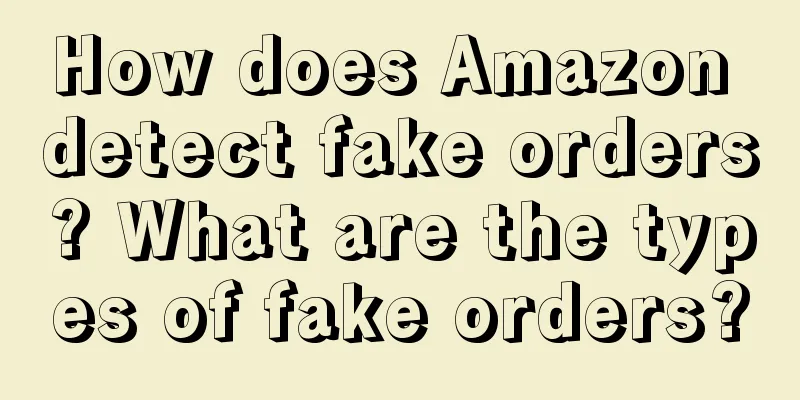From the seller's point of view, the benefit of fake orders is that it can increase the sales ranking of their own store and the number of reviews, which can directly affect the ranking and sales of the seller's products. Therefore, even if fake orders are risky, sellers will still take the risk and try to fake orders. However, Amazon also has its own methods to catch fake orders. How does Amazon detect fake orders ? What are the types of fake orders? Let's take a look. 1. Amazon’s method for detecting fake orders 1. Buyer account review rate The rate of leaving reviews on the Amazon platform has never been very high. If a buyer account places orders frequently and leaves 100% of the reviews, it is easy to make people doubt whether this is true. You should know that Amazon’s principle of blocking accounts is: “It is better to kill the wrong person than to let him go.” 2. Associations between buyer accounts A buyer account is not only responsible for one order, but also for many other orders. If a buyer account leaves a lot of reviews, the products involved are diverse, and the behavior is consistent, there will be a strong correlation. Once suspicion of fake orders is detected, all of them will be deleted. 3. Abnormal purchasing behavior Generally speaking, buyers have a limited frequency of purchases, and they are consistent in browsing pages, searching for products, and delivering addresses. If a buyer's account makes multiple purchases, an order can be placed without any searching or browsing on the platform, and the products are inconsistent and the delivery addresses are different, it is difficult for the system to not identify it as fake orders. 4. Brain and network IP abnormalities As mentioned above, the created "virtual machine" will have multiple network IPs. Every time you log in, the network IP and virtual host will change. Just imagine that if the host and IP are different each time, it will be difficult not to be suspected of fake orders. 5. Fisherman Perhaps they are trying to play the long game to catch a big fish. Amazon knows that you are suspected of brushing orders but has not been able to catch you, so they cleverly disguise themselves as reviewers and sneak into the review team. If you fall for it, the consequences can be imagined. Types of fake orders 1. FBA fake orders This method is to place a real order and use Amazon FBA for delivery. This model is currently the safest, but the disadvantage is that the cost is slightly higher. So you can consider it carefully when choosing. 2. Unlimited direct reviews Unlimited direct reviews is to create multiple listings through a small account, with each listing having 100 to 200 reviews, and then the main account will follow the small account, and then merge the main account with the main listing to form a variant, and the direct reviews of the small account will be displayed on the main account. This method can accumulate a large number of reviews in a short period of time. However, the survival rate is low, and it is easy to be deleted, and the listing will be closed. Those that should be closed will still be closed. 3. Self-delivery and order fraud This method is low-cost and does not require a lot of manpower and material resources. However, it also requires taking on huge risks, which can be easily detected by the Amazon platform. The general operation method is: send an empty package with a tracking number yourself, or directly find a freight forwarder to purchase existing package information with a tracking number. Of course, you can also cooperate with Amazon through eBay and wish to place orders, but this method is generally not recommended. 4. Find American buyers to place orders Privately contact relatives and friends abroad, Chinese communities, SNS social platforms, etc., and use various methods such as request/request/rental/cash back to let them use personal accounts (including main accounts and non-main accounts, FBA delivery and self-service delivery, real and fake goods) to purchase according to the seller's requirements. 5. Third-party service provider order-brushing software Domestic third-party service providers simulate the real system environment, IP, payment method, order number and buyer account to help buyers to place orders. By simulating the time zone, language and environment through IP, a real track browsing can escape the monitoring of Amazon mechanism and is relatively safe. This method saves your time and manpower to a great extent, and you can better operate your products. However, no matter which method is used, there are always certain risks. When Amazon examines whether a seller has engaged in fake orders, it usually starts with the buyer's account that left a review. In fact, Amazon has multiple ways to judge buyers who have engaged in fake orders. How does Amazon detect fake orders? What are the types of fake orders? The above is an introduction to the relevant content. |










